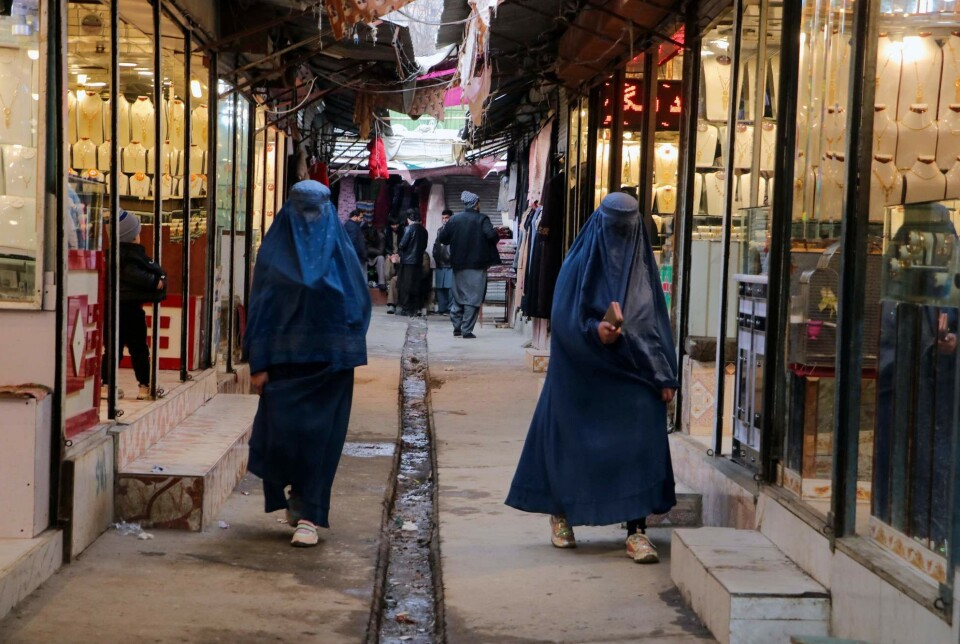
There are now more dictatorships than democracies in the world
There are now more people living under dictatorships than in democracies. At the same time, there are bright spots — several countries have moved away from authoritarian rule.
The global level of democracy is back to where it was in 1986. This means that 35 years of democratic progress have been reset over the past decade.
Nine countries have become pure dictatorships in the last two years:
Afghanistan, Chad, Guinea, Haiti, Iran, Mali, Myanmar, Turkmenistan and Uzbekistan.
Another term for these is closed autocracies, see fact box.
These trends have been documented by the Varieties of Democracy project at the University of Gothenburg, also called V-DEM. They have measured the level of democracy in the world by examining how many of the world's inhabitants live with democratic rights.
Economic crises
Øyvind Østerud, a professor at the Department of Political Science at the University of Oslo (UiO), has contributed to V-DEM's latest report as a country expert.
He points out that some of the most authoritarian countries in the world – such as China and now India – are extremely populous. This has an impact on the measurements. But the more-or-less authoritarian states are also in the majority when the number of states is used as the unit of measurement.
Østerud believes that the decline in democratic governance is often due to economic setbacks.
“There will likely be more dissatisfaction, more polarization. The authorities tend to tighten up a bit because there is more unrest, so economic crises are an important part of the explanation for the decline in democratic governance,” he said.
Some countries with authoritarian rule, such as China, have also been very successful economically.
“This means that an authoritarian form of government has become a development model for other countries, because democratic regimes have been very poor at delivering welfare and growth,” he said. “Many democratic states have stagnated and experienced rising unemployment.”
Some have become more democratic
The democratic decline is particularly evident in the Pacific region, in Eastern Europe and in Central Asia. There has also been a decline in Latin America and the Caribbean.
There are nevertheless examples of countries that have moved in the opposite direction, from authoritarian rule to democratic rule. Bolivia, Bulgaria, the Czech Republic, the Dominican Republic, Malawi, Moldova and Zambia have all seen an evolution from authoritarian rule to democracy over the past three years.
Østerud believes this may be due to the fact that they have managed to pursue an economic growth policy, which in turn means that they deliver more to the population.
“These countries are trying to implement redistribution policies, which means that the difference between poor and rich becomes somewhat smaller. The southern and south-eastern European countries are also characterized by membership of the EU, which has enabled them to reduce unemployment by exporting labour to richer parts of Europe,” he said.
“This means that the living conditions for many improve, and then the conditions for democratic governance are more favourable,” he said.

Thinks Western support can influence Ukraine
Are there any countries that are currently governed in an authoritarian manner that could move in a more democratic direction in the coming years?
Østerud is not certain.
“It is very difficult to predict that, because it depends very much on the development in the country, whether they manage to reverse the trend in the direction of smaller tensions between ethnic groups, and dampen internal tensions,” he said.
He nevertheless sees Ukraine as an opportunity in the longer term.
“It is possible to think that at one point or another, when the war is over, Ukraine will become dependent on Western support for reconstruction. As of today, Ukraine is a kind of hybrid regime, as it is called, with strong authoritarian features and enormous corruption, and it is reasonable to believe that things will improve when the war is over. With dependence on Western support and a stronger orientation towards the West, there will be pressure in the direction of trying to overcome some of the corruption and to get a government that is responsive to the population,” he said.
———
Translated by Nancy Bazilchuk
Read the Norwegian version of this article on forskning.no
Reference:
Evie Papada et.al.: Defiance in the Face of Autocratization. V-Dem Institute Democracy report, 2023.


































